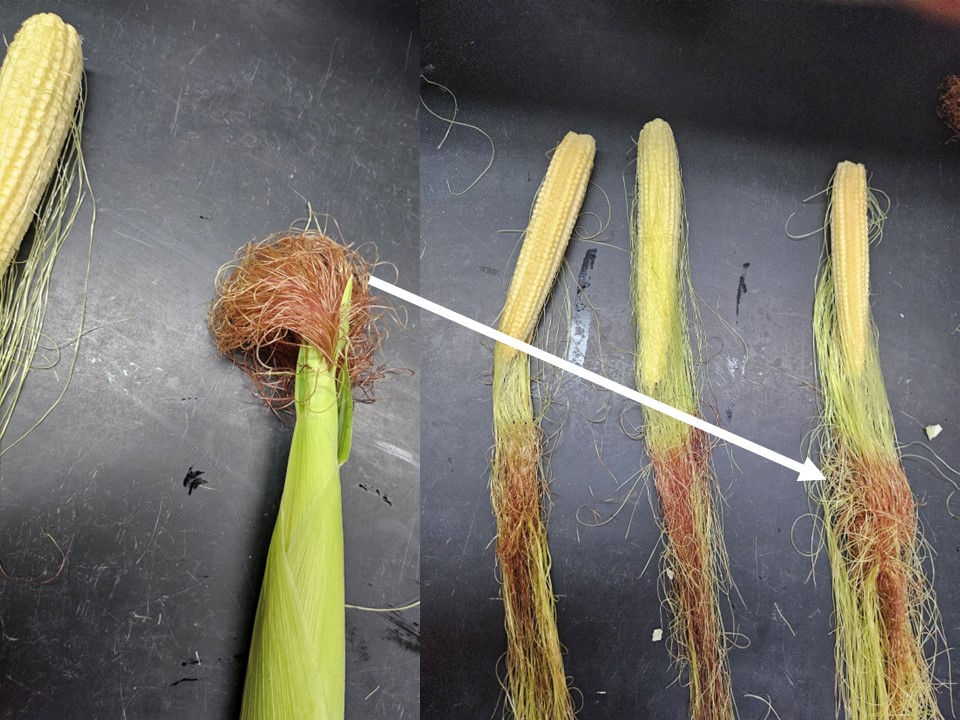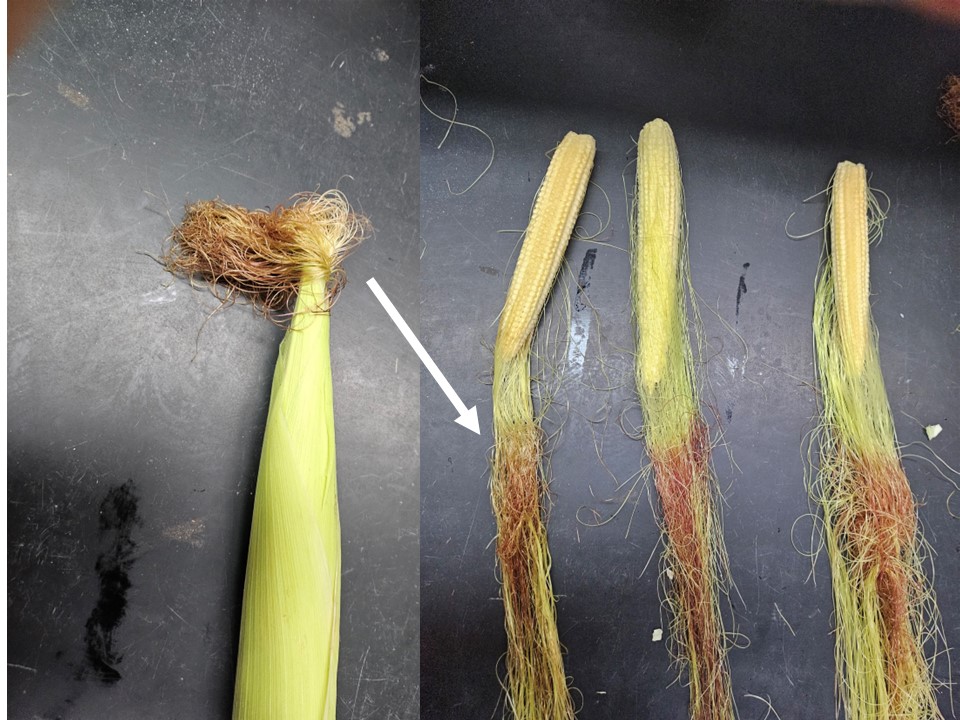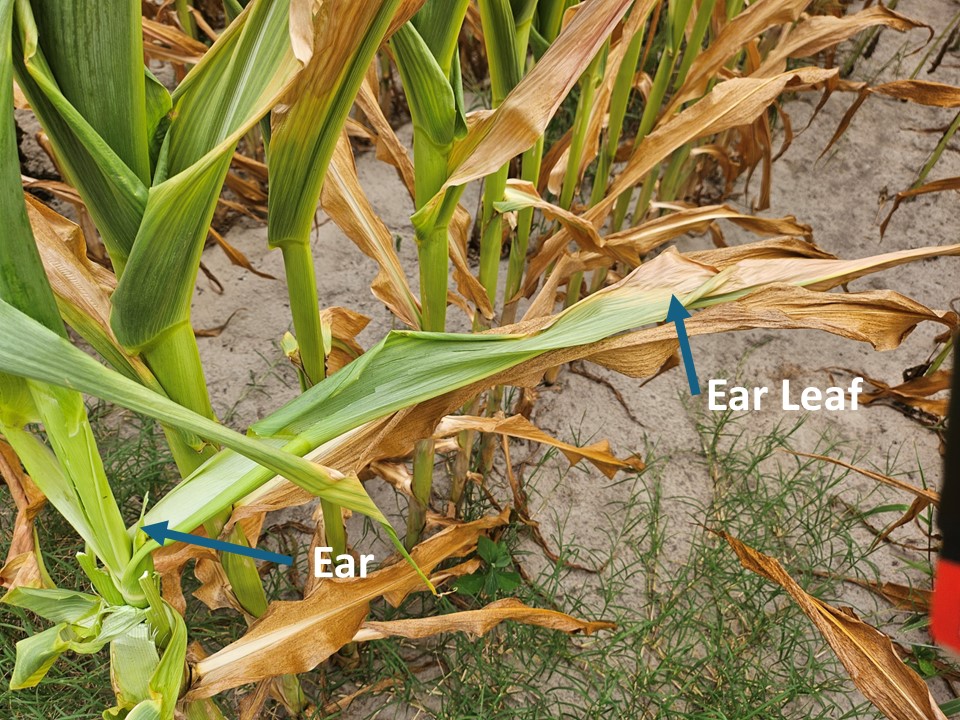It Is a Drought! When Should I Give Up on My Corn Crop?
go.ncsu.edu/readext?1011547
en Español / em Português
El inglés es el idioma de control de esta página. En la medida en que haya algún conflicto entre la traducción al inglés y la traducción, el inglés prevalece.
Al hacer clic en el enlace de traducción se activa un servicio de traducción gratuito para convertir la página al español. Al igual que con cualquier traducción por Internet, la conversión no es sensible al contexto y puede que no traduzca el texto en su significado original. NC State Extension no garantiza la exactitud del texto traducido. Por favor, tenga en cuenta que algunas aplicaciones y/o servicios pueden no funcionar como se espera cuando se traducen.
Português
Inglês é o idioma de controle desta página. Na medida que haja algum conflito entre o texto original em Inglês e a tradução, o Inglês prevalece.
Ao clicar no link de tradução, um serviço gratuito de tradução será ativado para converter a página para o Português. Como em qualquer tradução pela internet, a conversão não é sensivel ao contexto e pode não ocorrer a tradução para o significado orginal. O serviço de Extensão da Carolina do Norte (NC State Extension) não garante a exatidão do texto traduzido. Por favor, observe que algumas funções ou serviços podem não funcionar como esperado após a tradução.
English
English is the controlling language of this page. To the extent there is any conflict between the English text and the translation, English controls.
Clicking on the translation link activates a free translation service to convert the page to Spanish. As with any Internet translation, the conversion is not context-sensitive and may not translate the text to its original meaning. NC State Extension does not guarantee the accuracy of the translated text. Please note that some applications and/or services may not function as expected when translated.
Collapse ▲Sometimes the things we fear most happen. For a corn farmer the thing they fear most is a prolonged drought during the silking stage of corn development. It is not uncommon to see this occur in a given region of North Carolina but it is rare when it happens statewide. After weeks without appreciable precipitation we are experiencing a statewide severe drought in 2024. The question that is being asked is “What do I do now”?
First Steps
A situation like this is why you spend the money on crop insurance so the first step is to get out your policy and contact your insurance agent. Make sure you understand what you need to do to document your losses and what options you have in terms of declaring the crop a total or partial loss. The next step is to assess your crop so that you know what can be salvaged and what cannot. Variability in soils and moisture within a field makes it difficult to assess losses on a field basis. Using a UAV to capture an aerial image is often helpful in these situations to get a clear idea of the areas of the field that are better or worse off. With an aerial image in hand a grower can then go to the field and look at good and bad areas and make assessments as to yield potential and how much can or cannot be saved.
Assessing Yield Potential
What I often find when assessing yield potential is that either I am too pessimistic and give up on a crop that still would have produced a respectable yield or I am too optimistic and see more yield than is warranted. The key is to avoid either of these pitfalls. So what should I look for to assess the ability of this corn crop to produce a yield that makes it worth keeping as opposed to destroying the crop in the field. Here is what to look for:
- Regardless of the growth stage if the ear leaf is desiccated, completely brown, then that corn plant is a complete loss (Figure 1)(Figure 2). Even if a secondary ear on the plant was to develop it will never receive pollen. If most of the corn plants in the field are in this condition then the field is a complete loss. This is the easiest type of damage to assess. The key issue is to know what leaf is the ear leaf. Typically, the 9th or 10th leaf that the corn plant produces is associated with the ear leaf. On a typical corn plant the ear leaf is the leaf just above the middle of the stalk. As the plant reaches the tassel stage the ear leaf can be easily identified as it emerges from the leaf sheath and starts to show silks. At earlier stages you may need to split open the stalk and look for the most developed ear bud and assess the leaf that is associated with this bud.
- If the ear leaf is still green and remains green then the next step is to determine if the kernels on the ear are, or will be, pollinated. This means moving into the field and looking at plants in both the good and bad areas of the field. First, you should look at whether or not the silks are emerging in synchrony with the tassel. If the tassel is open and shedding pollen but you do not see silks emerging OR in some cases the silks are coming out of the ear shuck but the tassel is not open then there is a loss of synchrony (this is often called nic) and at best only a part of the ear will produce kernels. If the tassel and silks are both open to each other then the next step is to look at the silks. If the silks are green or white then they have not received pollen. If they are dark brown or black they have received pollen (Figure 3). If they are purple they have died without receiving pollen (Figure 4). The appearance of the silks will help in determining how effective pollination is or has been. Finally, shuck back the ear. Hold the ear by the base and shake it vigorously. If the silks detach and fall off then those kernels are pollinated. If the silks stay attached then those kernels are not pollinated. Of course you could wait for several days and then see if the kernels are forming a blister and see which kernels pollinated and which did not but if you are eager to replant then you might not want to wait that long.
- Once you have assessed the efficacy of pollination then you can evaluate your yield potential. This can be done by looking at the ear and determining how many rows of kernels are pollinated and how many kernels in the row will be pollinated. IT is not uncommon given the stress we have seen to see a number of kernels at the tip of the ear that do not pollinate and abort. Then use the formula:
Rows per ear X kernels per row X plant population in 1000th of an acre/90 = bu per acre
While this number is typically about 5% greater than the final yield it still should give you an idea of yield potential. If the potential yield is less than your insured yield then you know what course you need to pursue. If it is greater than your insured yield you can keep the crop and hope that future weather conditions improve to allow the crop to achieve that yield.
- It is important to understand that plant height is NOT a good measure of yield potential. Yes, a shorter plant indicates that stress has occurred but short corn plants still can produce a large ear and respectable yield. The key is knowing if these short plants will have kernels on the ears.
My Corn is a Complete Loss – Can I Replant?
If it is clear that the corn you planted has been destroyed by this sustained drought or if your potential yield is so low as to not be worth saving the crop then the next question is whether or not to attempt to replant. Given the time of year it is important to realize that any attempt to replant will be associated with some risk to losing your investment. Clearly, the crop with the least risk and best yield opportunity is soybean. The problem is the fact that most growers have applied herbicides, particularly atrazine, that can cause the soybean to experience poor emergence and early growth resulting in low yield potential. Furthermore, most of the nitrogen applied to corn will not be needed for soybean. It is important to talk with your county agent or a specialist with knowledge of the herbicides you used before deciding to plant soybean.
If herbicide carryover is a problem for establishing soybean then the next two options are to plant corn or sorghum. Both of these choices carry a higher risk since they will be dependent on good rainfall in late July and early August to produce a respectable yield. While many might recommend grain sorghum due to its better drought tolerance the problem with this crop is the lack of grain buyers for sorghum and the fact that any dry weather in late July or early August will delay maturity. This means that any stress could result in a freeze event before the sorghum could mature. Furthermore, sorghum yield potential when planting in early July ranges from 70 to 90 bu per acre. In comparison even a medium maturing corn hybrid ranging from 110 to 115 days to maturity will reach maturity before the end of October and avoid potential fall freeze damage. The issue with planting corn in early July is that it is absolutely critical that the crop receive adequate rainfall during the period from V6 to V12 (late July to Late August). In studies done in conjunction with Virginia Tech we found that under irrigation corn planted before July 10 yielded 120 to 140 bu per acre, but corn that was not irrigated and experienced dry weather from V6 to V12 only produced 40 bu per acre. Clearly, there is a fair amount of risk involved with planting either sorghum or corn in early July.
How Should Replant Be Done?
If the decision is made to plant corn or sorghum in early July then the best approach would be to invest as little as possible into the crop until there is a clear indication that late July to August rainfall is a good possibility. Since it is warm there is no need to use a starter fertilizer and herbicide and any further N applications should be delayed until the V6 to V7 stage of growth in either corn or sorghum. This would allow the assessment of weather and potential rainfall and help determine if the cost of these inputs would be warranted.





